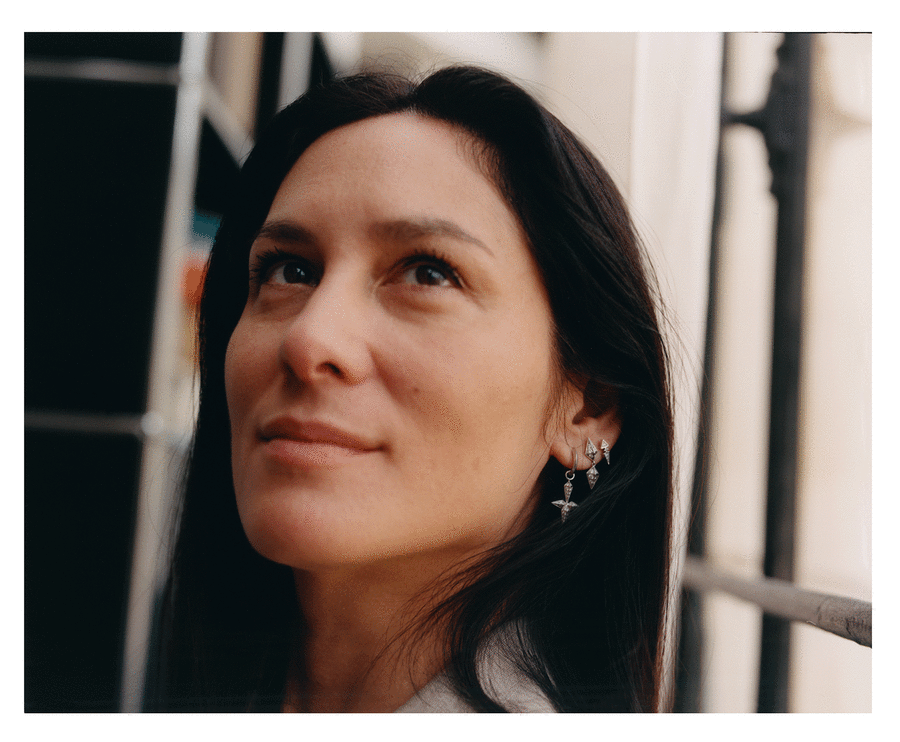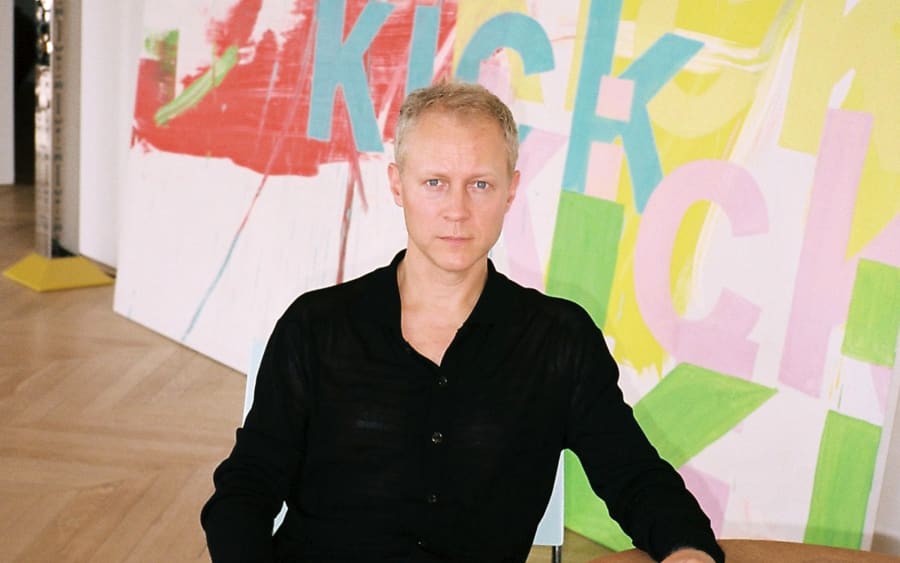‘We come from different cultures – and, in many ways, different worlds. One of us, Anne, is a Parisian documentary filmmaker; the other, Wolfgang, an aspiring Viennese pianist who became an international business consultant. From the very beginning, building our collection was a shared endeavor. We embraced our sensibilities, allowing the collection to reflect our perspectives on the artists and works we chose. What ultimately led us to become collectors happened gradually.
‘We began by acquiring works together – what we called “works of the heart” – often guided by our instincts. Over time, we felt the need for greater structure and began referring to what we had gathered as a “collection”. That shift brought a new sense of coherence and fluidity. It took 10 to 15 years of conversation, research, and learning to truly become collectors. By that point, we already owned hundreds of works – yet we lacked a clearly defined strategy. Eventually, we realized that to move forward meaningfully, we had to articulate one. We began focusing on three core pillars: identifying the artistic movements we wanted to follow, the geographies we wished to explore, and – above all – the artists we felt compelled to represent. For example, if you decide to collect aleatoric art, you simply cannot overlook Kazuo Shiraga; he is indispensable.
‘For us, depth is essential. When we choose to include an artist – particularly one in their 60s or 70s – we make a conscious effort to acquire both recent works and key pieces from earlier in their career. Our aim is for the collection to reflect the full arc of the artist’s creative journey. One example: when we purchased our first work by Georg Baselitz in 2009, Schlafzimmer (Bedroom, 1975), we also bought Zwei Hunde aufwärts (Two Fractured Dogs/Upwards, 1968). Since then, we have continued to collect his work almost every year.
‘We have established clear criteria that guide our acquisitions. Above all, we are drawn to artists whose work marks an historical rupture – a decisive break from what came before. For us, collecting is about exploring new movements and languages. It’s about expanding our horizons, stepping into unfamiliar territories, moving toward discomfort, and embracing what challenges our ways of seeing. And, of course, excellence is fundamental.
‘Ultimately, everything comes down to the quality of the works. We are particularly proud to own The Diagonal of May 25 (1963) by Dan Flavin – one of the very first neon works he ever created. Similarly, we have one of the earliest paintings in which Agnes Martin began working in series: Buds (1960), which has been included in major international exhibitions and remains a key piece for understanding her artistic development.
‘To be able to access exceptional artworks depends on building deep, long-term relationships with artists and their galleries. It takes years to earn that kind of trust – for people to believe in your vision and to understand that these works will eventually enter public collections. That’s something we care about profoundly.
‘In 2014, following a major exhibition of works from our collection, Love Story at the Belvedere Museum in Vienna, we reached a turning point. We began to reflect seriously on the future. The central question was whether to create a private museum or to continue collaborating with major public institutions. We chose the latter, convinced that this approach would offer far greater visibility and broader public engagement than a private museum could provide. We are now actively developing plans to implement this strategic decision. This process has led to the creation of the Anne & Wolfgang Titze Foundation, which will safeguard and carry forward our shared artistic vision well beyond our lifetime. Its mission is to continue the work we have passionately pursued over the past 35 years: shaping and sharing the collection, organizing traveling exhibitions, granting institutional loans and donations, and also supporting new creations in the fields of art, music, and film. One idea we are particularly enthusiastic about is the development of dedicated monographic rooms within museums – for example, with groups of 10 to 12 works by Fred Sandback or Sol LeWitt – allowing visitors to fully immerse themselves in the work and universe of individual artists.
‘Today, our focus is increasingly centered on sculpture. We are expanding this part of the collection, with many of the artworks soon to be installed in two or three sculpture parks currently in development. We have already committed to cooperating with a foundation in the South of France and a museum in Austria. One of the sculpture parks will be dedicated to major minimalist works by artists such as Carl Andre, Larry Bell, Flavin, Donald Judd, LeWitt, Robert Morris, Sandback, Tony Smith, Bernar Venet, and Lawrence Weiner, among others. Another will feature outstanding pieces by David Altmejd, Baselitz, Alberto Burri, Richard Deacon, Valie Export, Antony Gormley, Hans Josephsohn, Alicja Kwade, Richard Long, Sarah Lucas, Jaume Plensa, Sterling Ruby, Thomas Schütte, Rebecca Warren, Erwin Wurm, and more. These parks are conceived as spaces for contemplation, discovery, and dialogue – extending our commitment to making art accessible and placing it in environments where it can be experienced in new and meaningful ways.
‘As one of us is a filmmaker, we felt compelled to make a documentary portraying our sculpture collection. The result is Before and After/The intimate story of a collection, written and directed by Anne de Boismilon. This film will be presented in museums as well as at documentary film festivals. Its objective is to explore the artworks and the artists behind them, and what it means to create and curate a collection – an artistic gesture in its own right.’
Florence Derieux is an art historian and curator.
Caption for header image: Anne and Wolfgang Titze, 2025. Photograph by Stéphanie Davilma for Art Basel.
Published on August 21, 2025.


